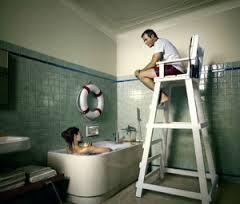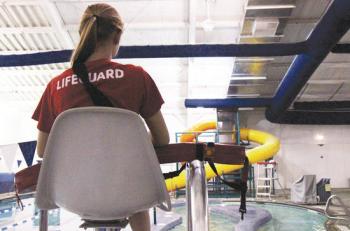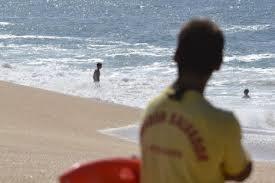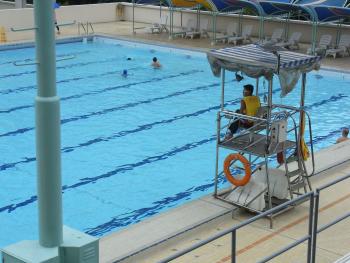
October 1, 2016 The Standard of Care in Lifeguarding
The Standard of Care in Lifeguarding law requires lifeguards to act or behave toward other individuals in a certain, definable way, and, under given circumstances, the lifeguard has a duty to act or refrain from acting. Generally speaking, the lifeguard must be concerned about the safety and welfare of other individuals when his or her behavior or activities have the potential for causing others injury or harm. The manner in which a lifeguard is expected to act or behave is referred to as the “standard of care”.

The term “standard of care” can be defined as how a reasonably prudent person with similar training and experience would act under similar circumstances, with similar equipment, and in the same place. The standard of care is established in many ways, among them being local custom, statues, ordinances, administrative regulations, and case law. In addition, professional or institutional standards have a bearing on determining the adequacy of a lifeguard’s conduct, as well as defining the standard of care.
Based on a review of many legal cases in which lifeguards or other supervisory personnel were accused of negligence, I have defined six elements that appear to be the basis for most drowning or aquatic injury litigation. The six elements are as follows:
PERSONNEL
Competent personnel should be hired as lifeguards and supervisors to safeguard patrons engaged in recreational, fitness, competitive, and instructional swimming activities. The minimum training expected for lifeguard personnel is the successful completion of the American Red Cross Lifeguarding course or the equivalent (Note: This is also dependent upon the type of facility such as open water, swimming pool, etc.). Certification implies that at the time of course completion, the individual met all educational objectives – both intellectual and practical.
In addition to certification requirements, lifeguard personnel should be carefully screened to determine their competence in the area in which they currently hold certification (i.e. lifeguarding, first aid, CPR). The American Red Cross and the United States Lifesaving Association advocate that additional pre-season training and continuous in-service training should be conducted for lifeguard personnel and that this training should be specific to the facility in which they will be working. This training should, at a minimum, include the following components:
- Use of specialized rescue and safety equipment.
- Standard operating procedures.
- Emergency Action Plans.
- Emergency Response/Operations Plans.
- Rules and regulations for patrons.
- Facility orientation
- Emergency communication procedures.
- Lifeguarding procedures and techniques.
- Review of water rescue and EMS skills.
- Risk management: identification of hazards and risks.

PREVENTION STRATEGIES
A comprehensive threat analysis should be conducted of the facility before allowing patrons to participate in swimming activities. This threat analysis should identify physical hazards and those activities that place patrons at increased risk. Once the hazards and risks are identified, specific incident prevention strategies need to be developed, implemented, and administered. A threat analysis should also be conducted, whenever possible, for groups with special needs. Any chronic condition that places a patron at increased risk should be considered, and appropriate safeguards (i.e. the use of PFDs, additional supervision, etc.) should be implemented to prevent incidents from occurring.
SUPERVISION
While patrons are engaged in any swimming activity, lifeguards and supervisors should be appropriately and effectively positioned to provide maximum security to the patrons through vigilant surveillance. If personnel are going to engaged in activities that require their participation in the water (i.e. in-water instruction), then at least one “dry-land” supervisory should be available to supervise the patrons and personnel. The number of “dry-land” supervisors and in-water personnel is determined by the skill level, environmental conditions (i.e. water depth, lighting, type of facility), size and layout of the facility, number of patrons in the water, and the activity itself. Other factors to be considered are the 30-Second Rule, the 10/20 Rule, and the 10 x 10 Reaction Rule.
- 30-Second Rule
The lifeguard surveys one extreme of his/her zone of responsibility to the other and back within a total of 30-seconds. - 10/20 Rule
Once the lifeguard identifies a potential incident (i.e. victim, hazard, risk), he/she must determine within 10 seconds whether or not intervention is required. If required, the lifeguard must be positioned in order to intervene within 20 seconds. - 10 x 10 Reaction Rule
The lifeguard must be able to survey his/her zone of responsibility within 10 seconds and, if required, must be able to intervene within 10 seconds.

DISTRACTING FACTORS
Supervisors should be aware of the dangers of distractions, and every effort must be made to eliminate these distractions. Personnel should be positioned to reduce distracting factors.
RECOGNITION
Personnel should be aware of activities that place patrons at increased risk. Any unsafe activities should be prohibited, and personnel must be able to identify and prohibit these activities immediately. Personnel must also be able to recognize any physical hazards in or around the facility. And, personnel must constantly assess the condition of all swimmers and be able to recognize a swimmer’s distress (whether active or passive).
RESPONSE AND EMERGENCY CARE
Appropriate rescue equipment should be available, and all personnel should be familiar with the location and use of that equipment. An effective emergency communication system must be in place and should be used during an incident to notify other personnel, as well as to notify the emergency dispatcher should Fire, Rescue, EMS, or Law Enforcement personnel be required.
Emergency Action Plans and Emergency Operations/Response Plans should be developed for all possible emergencies and should be implemented immediately when an emergency incident occurs. Not unlike professional Fire, Rescue, EMS, and Law Enforcement personnel, Lifeguards are expected to respond quickly and effectively to all emergency situations.

LEGAL IMPLICATIONS
Potential legal problems occur when the standard of care is not met. Failure to recognize a victim’s distress, failure to perform an important or necessary procedure, or performing such a procedure in a careless or unskilled manner would violate the standard of care. When such a violation causes further injury or death to the victim, a court may find the lifeguard, as well as his/her employer, negligent. Legal negligence results in a civil liability when the actions or behavior of the lifeguard do not conform to the standard of care and injury or death results.
Many individuals and organizations believe that the “Good Samaritan Laws” in their state would protect the organization and employees from liability. However, in most states, the “Good Samaritan Laws” attempt to assure that someone who voluntarily helps an injured or suddenly ill person at the scene of an incident is not legally liable for errors or omissions in rendering emergency are in good faith. These laws, typically, are not intended to provide any liability protection to those individuals who have a duty to act, such as Firefighters, EMS, Law Enforcement, and Lifeguard personnel.
Most of these statutes do not provide immunity for gross negligence or willful and wanton misconduct that results in an injury or death. Furthermore, an individual employed as a lifeguard is expected to respond to emergencies at the facility. He or she does not do so on a voluntary basis, but rather is employed to uphold the standard of care expected of lifeguards, so “Good Samaritan Laws” may not apply.
As aquatic professionals and supervisors, we should not overly concern ourselves with liability matters, but rather, should spend our efforts assuring that our personnel have the appropriate training and equipment to provide the best level of care.


